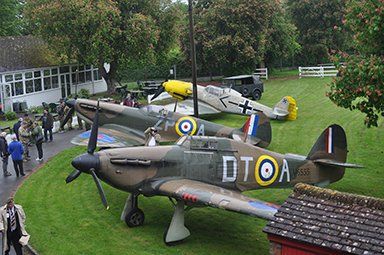The Home Front
“We shall never surrender”
Winston Churchill
World War Two, as with World War One before it, was described as a Total War, meaning that civilians, resources and infrastructures were at risk as much as military targets. This war would not just involve soldiers, the government fully expected the war to disrupt and threaten the lives of civilians left at home. Even before war was declared on 3 September 1939, Britain began implementing measures in preparation; civilian organizations were formed, air raid shelters designed and built, gas masks distributed.
The first Anderson shelter was built in a garden in Islington, London on 25 February 1939 and, between then and the outbreak of the war, around 1.5 million shelters were distributed to people living in areas expected to be bombed by the Luftwaffe.
Photo – Anderson Shelters
Tube stations became vital as shelters for the Blitz, which devasted the country between 7 September 1940 and 11 May 1941, when the Germans tried to break British morale and cause destruction, bombing Britain and leading to over 40,000 civilian casualties
With war inevitable, evacuation plans were put into action for children to keep them safe. The first wave of children were evacuated days before war was declared into rural areas and out of cities like London.
Photo - evacuation
Men, who were not in a reserved occupation, were needed to fight on the front line, which meant their jobs had to be filled. So just like the First World War, women were drafted in to do their duty, from working in the factories and on the land in the Women’s Land Army, or even into the Army, Navy and Air Force. The contribution of men and women supporting the war effort was acknowledged with the term: “The Home Front” to describe the battles that were being fought on a domestic level with rationing, recycling of all useable materials and war work, such as in munitions factories and farms, releasing men into the military.
Photo – home safety
Food, clothing, petrol, leather and other items were rationed, with Ration books issued to control the supply and ensure everyone got their fair share. However this created an illegal market, known as the Black Market - buying and selling restricted items. The Ministry of Food helped civilians with their rations giving them ideas on meals and minimizing waste. Short ‘Food Flash’ films were shown in British cinemas to help people better understand rationing, as well as provide tips on everything from keeping milk fresh to cooking with dried eggs.
Rationing started in January 1940 and constantly changed throughout the war as items became scarce. The rationing of sweets and chocolate began on 26 July 1942, ending 5 February 1953. Rationing finally ended in July 1954 when meat was taken off ration books.
